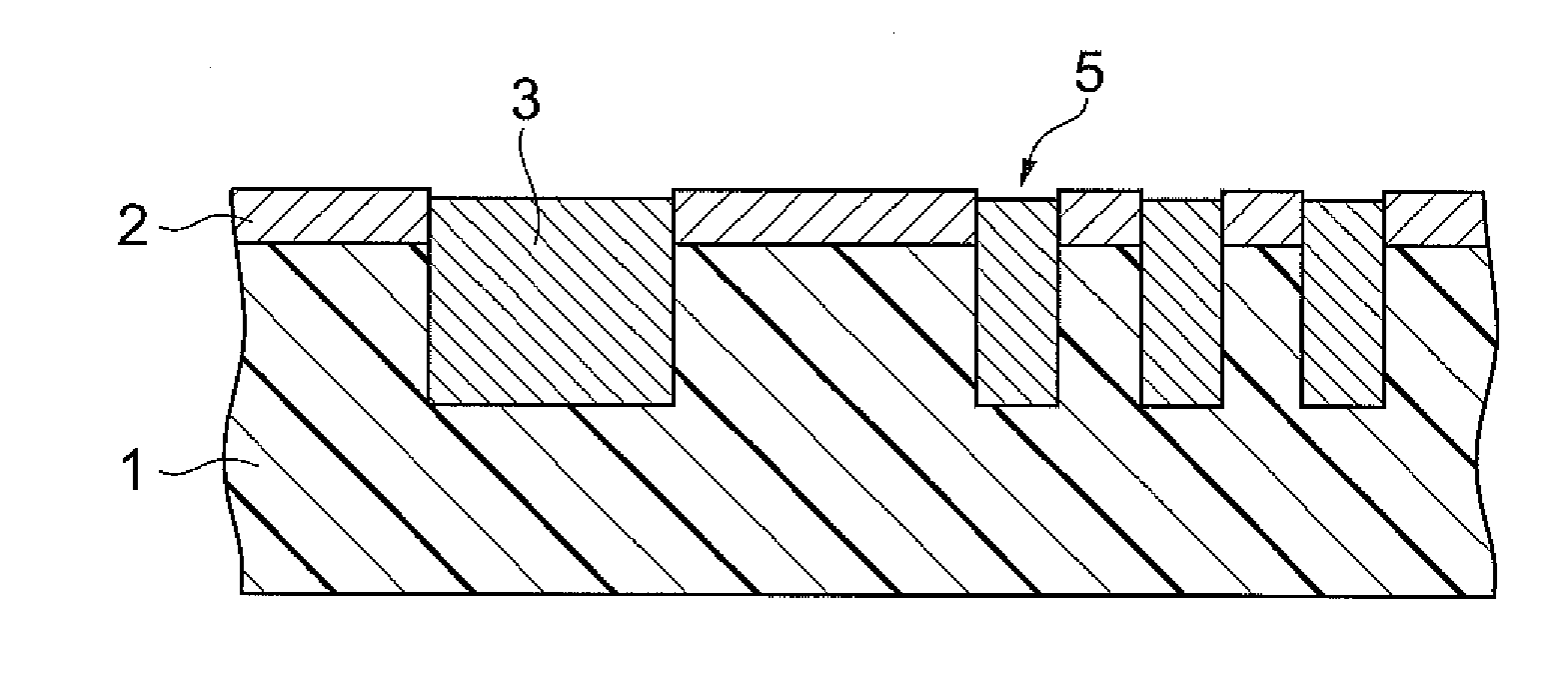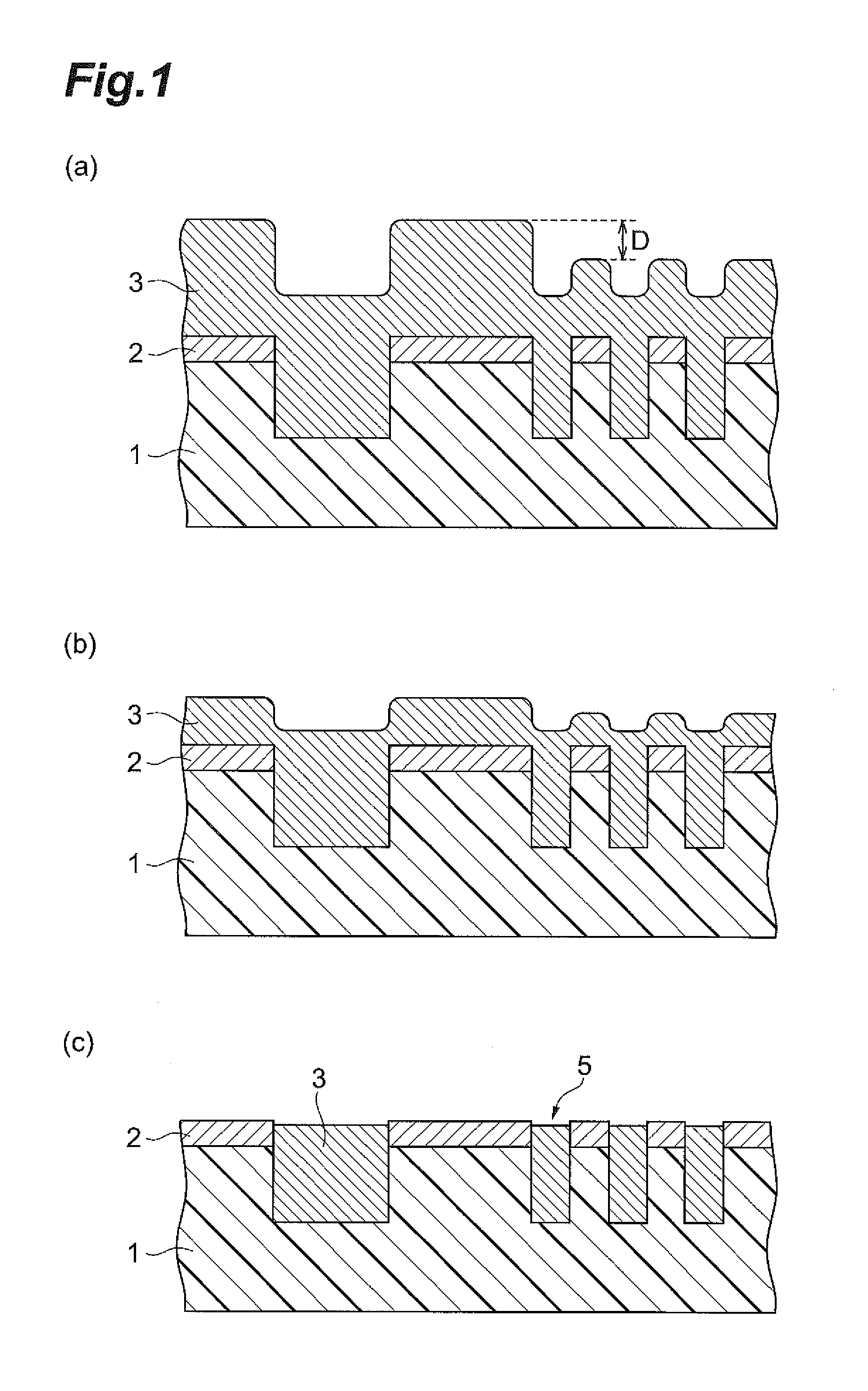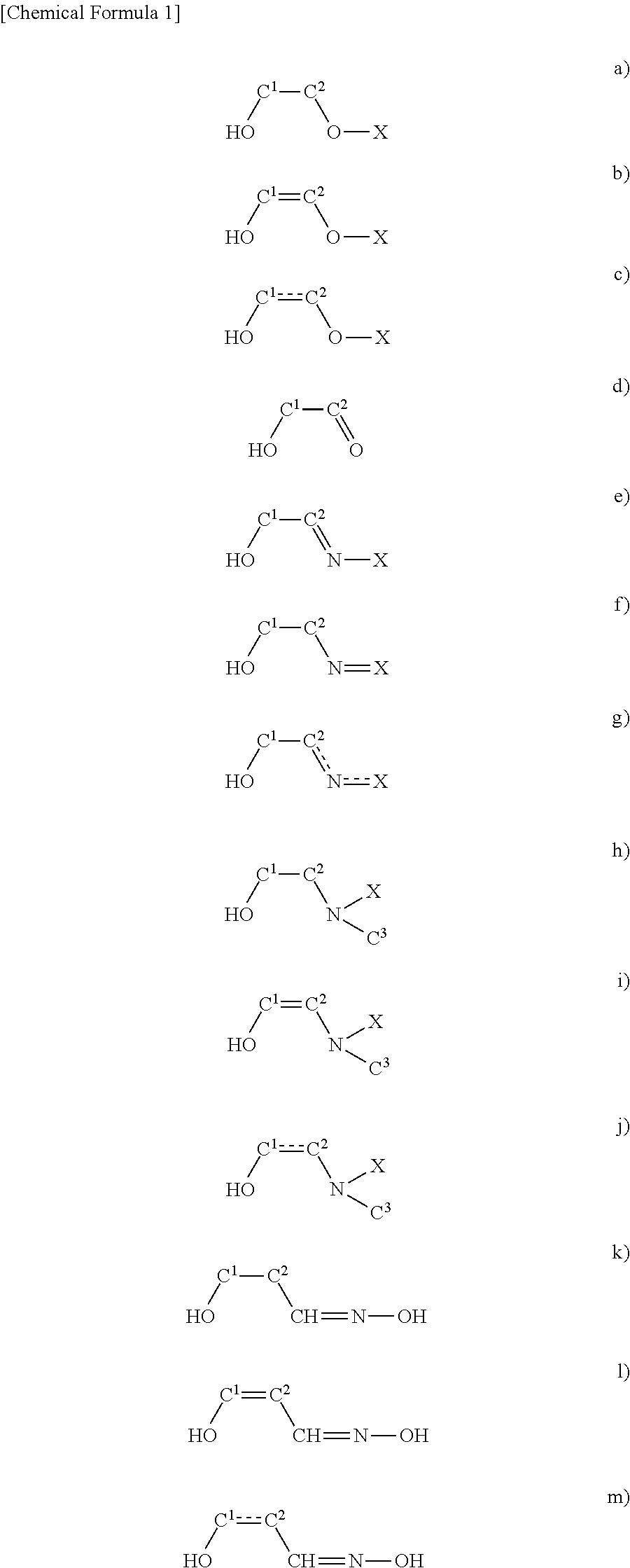Polishing solution for cmp and polishing method using the polishing solution
a technology of polishing solution and polishing solution, which is applied in the direction of lapping machine, manufacturing tools, other chemical processes, etc., can solve the problems of inability to achieve a sufficiently high polishing speed in some cases, and the surface is uneven upon completion of polishing, and achieves satisfactory dispersion stability of abrasives, satisfactory water solubility, and satisfactory dispersion stability
- Summary
- Abstract
- Description
- Claims
- Application Information
AI Technical Summary
Benefits of technology
Problems solved by technology
Method used
Image
Examples
examples
[0126]The present invention will now be explained in greater detail through the following examples, with the understanding that these examples are in no way limitative on the invention.
[0127](Preparation of Abrasive Grains)
[0128]After placing 40 kg of cerium carbonate hydrate in an alumina container, it was fired at 830° C. for 2 hours in air to obtain 20 kg of yellowish white powder. The powder was subjected to phase identification by X-ray diffraction, and it was confirmed that the powder was cerium oxide powder. The particle size of the powder obtained by firing was 20-100 μm.
[0129]Next, 20 kg of cerium oxide powder was subjected to dry grinding using a jet mill until polycrystalline cerium oxide with grain boundaries remained. The ground cerium oxide powder had a specific surface area of 9.4 m2 / g. The specific surface area was measured by the BET method. When the ground cerium oxide powder was observed by SEM, and it was confirmed that the ground cerium oxide powder contained pa...
examples 1-13
, Comparative Examples 14-15
[0134]Polishing solutions for Examples 1-13 were prepared using additive A, and in some cases additive B which satisfied conditions i) to v) or additive C which was a saturated monocarboxylic acid (see Table 1). Separately, polishing solutions for Comparative Examples 14-15 were prepared using as the additive a thiazole compound that did not qualify as additive A (see Table 2).
[0135]After mixing the slurry described above (abrasive grain concentration: 10.0 mass %) and the additives listed in Tables 1 and 2, moderate amount of deionized water was added so that the content of each component was adjusted to the content listed in Tables 1 and 2, the mixture was then stirred over a period of 10 minutes. Next, the pH of the polishing solution was adjusted to the prescribed value by adding ammonia water (NH4OH) as a pH regulator to obtain 10-fold concentrated solution of polishing solution for CMP (see Tables 1 and 2. Abrasive grain concentration is 5.0 mass %)...
example 16
[0147]Polishing solution for CMP of Example 16 was prepared to confirm effect of surfactant (see Table 3). The surfactant content was adjusted to 0.01 mass % based on the total mass of the polishing solution for CMP. As compared to Example 1, it is clearly indicated that in-plane uniformity is improved by using the polishing solution for CMP comprising a nonionic surfactant in Example 16.
TABLE 310-fold concentrated solutionpolishing solution for CMPof polishing solution for CMPPatternSurfactantpolishingIn-planeAdditive A(contentspeeduniformityNo.(content [mass %])[mass %])pH[Å / min][%]pH161,2-Benzoisothiazol-PEG40004.815004.25.13(2H)-one(0.1)(1.0)
[0148]In the present specification, the present inventors have described preferred modes for carrying out the invention. Similar preferred modifications will also be readily apparent to a person skilled in the art from the description related herein. The present inventors are also well aware of different modes of the invention or inventions ...
PUM
| Property | Measurement | Unit |
|---|---|---|
| mean particle size | aaaaa | aaaaa |
| temperature | aaaaa | aaaaa |
| time | aaaaa | aaaaa |
Abstract
Description
Claims
Application Information
 Login to View More
Login to View More - R&D
- Intellectual Property
- Life Sciences
- Materials
- Tech Scout
- Unparalleled Data Quality
- Higher Quality Content
- 60% Fewer Hallucinations
Browse by: Latest US Patents, China's latest patents, Technical Efficacy Thesaurus, Application Domain, Technology Topic, Popular Technical Reports.
© 2025 PatSnap. All rights reserved.Legal|Privacy policy|Modern Slavery Act Transparency Statement|Sitemap|About US| Contact US: help@patsnap.com



